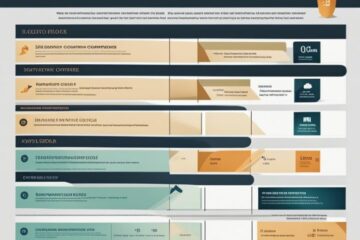Overseeing and resolving problems efficiently are crucial in every business. Issue tracking and management software plays a vital role in maintaining order and efficiency within organizations. It helps teams to identify, prioritize, and resolve issues in a timely manner.
Issue tracking and management software provides a centralized platform for teams to log, track, and manage issues effectively. This type of software offers a systematic way to document and address problems, ensuring nothing falls through the cracks. By keeping all issues organized and accessible in one place, teams can collaborate more efficiently and prevent potential setbacks.
Additionally, issue tracking and management software offers valuable insights through reporting and analytics, enabling teams to identify common trends and recurring issues. By analyzing this data, organizations can make informed decisions to improve processes and prevent future problems. Overall, investing in quality issue tracking and management software is necessary for businesses looking to enhance productivity and maintain a high level of customer satisfaction.
Key Takeaways:
- Efficient Workflow: Issue tracking and management software streamlines the process of identifying, monitoring, and resolving issues in a systematic way.
- Centralized System: These tools provide a centralized platform where all project-related issues are documented, tracked, and managed in one place.
- Enhanced Collaboration: Teams can collaborate effectively on issue resolution, as the software allows for easy communication and task assignment.
- Improved Productivity: By keeping track of issues and their status, productivity is increased as there is clarity on what needs to be done.
- Customization Options: Many issue tracking software offers customization options to tailor the tool to the specific needs of a project or team.
- Reporting and Analytics: These tools often come with built-in reporting and analytics features, providing valuable insights into issue trends and team performance.
- Integration Capabilities: Issue tracking and management software can be integrated with other tools and systems, enhancing efficiency and workflow across the organization.
Understanding Issue Tracking and Management Software
Definition and Purpose
Some issue tracking and management software is a tool used by organizations to track, manage, and resolve various types of issues that may arise during a project lifecycle. The primary purpose of this software is to streamline the process of identifying, prioritizing, assigning, and resolving issues in a timely and efficient manner. By centralizing all issues in one place, teams can collaborate effectively and ensure that no issue falls through the cracks.
Components of Issue Tracking Systems
Any issue tracking system consists of several key components, including a dashboard for an overview of all issues, ticketing system for creating and tracking issues, assignment feature to assign issues to team members, reporting tool for analyzing trends and performance, and notification system to keep all stakeholders informed. These components work together to provide a comprehensive solution for managing issues throughout the project lifecycle.
For instance, the dashboard allows stakeholders to get a quick snapshot of the current status of all issues, while the ticketing system provides a detailed view of each issue, including its description, priority, and status. The assignment feature ensures that each issue is assigned to the right team member for resolution, while the reporting tool enables project managers to identify recurring issues and track the team’s performance in resolving them.
Types of Issues Handled by Software
Some issue tracking and management software can handle a wide range of issues, including software bugs, feature requests, customer feedback, and technical support queries. By categorizing and prioritizing these issues, teams can focus on resolving the most critical issues first, thereby improving overall project efficiency and customer satisfaction.
- Software Bugs – Errors in the code that affect the functionality of the software
- Feature Requests – Suggestions for new features or improvements to existing ones
- Customer Feedback – Comments and suggestions from customers regarding the product
- Technical Support Queries – Requests for assistance with using the software
For instance, a software development team may use issue tracking software to prioritize and address software bugs reported by testers, while a customer support team may use it to manage and respond to technical support queries from users. By efficiently handling these issues, teams can ensure smooth project delivery and maintain a high level of customer satisfaction.
The Lifecycle of an Issue
Issue Identification
Now, in the lifecycle of an issue, the first step is issue identification. This is the process of recognizing and acknowledging that a problem exists within a project or system. Effective issue identification is crucial for addressing and resolving issues in a timely manner. It involves stakeholders and team members actively monitoring for any signs of potential problems or deviations from expected outcomes.
During issue identification, it is imperative to gather as much information as possible about the issue. This includes details such as when the issue was first recognized, its impact on the project or system, and any known causes or contributing factors. The more comprehensive and accurate the information gathered during this stage, the easier it will be to move forward with addressing the issue.
Identifying issues early on in the project can prevent them from escalating into larger problems that may disrupt the project timeline or budget.
Issue Categorization
Any issue that is identified needs to be categorized appropriately to ensure that it is addressed in the most effective way. Issue categorization involves grouping similar issues together based on common characteristics such as the nature of the problem, its severity, or the part of the project or system it impacts. By categorizing issues, teams can prioritize and allocate resources more efficiently.
While categorizing issues, it is important to establish a clear and consistent classification system that all team members can adhere to. This helps in streamlining the issue management process and ensures that issues are addressed in a systematic way. Additionally, categorization enables teams to identify any recurring patterns or trends in the types of issues that arise.
Proper issue categorization is imperative for maintaining organization and focus within the issue tracking and management process, resulting in quicker and more effective resolutions.
Categorization is crucial because it allows teams to differentiate between various types of issues, such as bugs, enhancements, or feature requests. This differentiation helps in determining the appropriate actions needed to resolve each type of issue efficiently and effectively.
Issue Prioritization
Any project or system may have multiple issues that require attention, but not all issues are equally urgent or critical. Issue prioritization involves evaluating and ranking issues based on factors such as impact on the project’s success, severity of the problem, and potential risks involved. By establishing priorities, teams can allocate resources wisely and focus on resolving the most critical issues first.
During issue prioritization, it is imperative to involve key stakeholders and decision-makers to ensure that the ranking reflects the overall goals and objectives of the project. Teams can use frameworks such as MoSCoW (Must have, Should have, Could have, Won’t have) to categorize and prioritize issues based on their importance and relevance to the project’s success.
Efficient issue prioritization ensures that resources are utilized effectively, resulting in a more streamlined and successful issue resolution process.
Issue prioritization allows teams to address high-priority issues as soon as possible, minimizing their impact on the project timeline or budget. It also helps in managing stakeholders’ expectations by focusing on resolving critical issues first, demonstrating progress and commitment to project success.
Issue Assignment
For any issue to be resolved effectively, it needs to be assigned to the right individual or team responsible for addressing it. Issue assignment involves allocating the task of investigating, analyzing, and resolving the issue to a specific person or group. Clear assignment ensures accountability and ownership, leading to timely issue resolution.
Assigning issues requires considering factors such as the expertise and availability of team members, the complexity of the issue, and the resources needed for resolution. Effective communication and collaboration within the team are imperative to ensure that the assigned individual or group understands the issue and can work towards a solution efficiently.
Proper issue assignment plays a critical role in ensuring that issues are resolved promptly and that responsibilities are clearly defined within the team.
Issue assignment also facilitates tracking the progress of issue resolution and allows for timely updates and escalations if needed. By assigning issues to the most suitable team members, teams can leverage individual strengths and expertise to address issues effectively and efficiently.
Issue Resolution
To resolve an issue means to address the problem effectively and implement a solution that eliminates or mitigates its impact on the project or system. Issue resolution involves a systematic approach of investigating the root cause, developing and evaluating potential solutions, and implementing the most appropriate course of action to resolve the issue.
Effective issue resolution requires collaboration and communication among team members, stakeholders, and anyone involved in the resolution process. Teams need to document the steps taken to resolve the issue, including any challenges faced and decisions made along the way. This documentation not only ensures transparency but also helps in creating a knowledge base for future reference.
Timely and effective issue resolution is crucial for maintaining project momentum and ensuring that potential risks are addressed before they escalate into larger problems.
Issue resolution also involves validating the effectiveness of the solution implemented to ensure that it fully addresses the problem. Teams may need to conduct testing, gather feedback, and monitor the issue to confirm that it has been resolved satisfactorily. Regular updates and communication with stakeholders are imperative throughout the issue resolution process to keep them informed of progress and ensure their satisfaction with the outcome.
Issue Verification and Closure
Prioritization in the issue lifecycle includes verifying that the problem has been resolved and that the solution implemented has been effective in addressing the issue. Issue verification involves testing, reviewing, and confirming that the problem no longer exists and that the project or system is functioning as expected. Once verification is complete, the issue can be formally closed, marking the successful resolution.
Issue verification and closure require thorough documentation of the verification process, including test results, feedback from stakeholders, and any additional steps taken to validate the resolution. Transparency and accountability are key during this stage to ensure that all parties involved are confident in the resolution and can sign off on closing the issue.
Verification and closure of the issue provide reassurance to stakeholders that the problem has been effectively addressed and that the project can proceed without any lingering issues.
Issue Documentation and Reporting
Identification at the issue level involves documenting the details of the issue, including the steps taken to resolve it and any lessons learned during the process. Issue documentation is imperative for creating a historical record of issues encountered and resolved throughout the project. This documentation serves as a valuable resource for future reference and analysis.
Issue documentation also includes generating reports on issue tracking and management, summarizing the types of issues faced, their resolutions, and any patterns or trends observed. These reports provide insights into the project’s health, the effectiveness of issue management processes, and areas for improvement in future projects. They also serve as a communication tool for stakeholders to understand the project’s progress and issue resolution efforts.
Thorough issue documentation and reporting foster transparency, accountability, and continuous improvement within the project team and organization.
Issue Tracking Systems: Key Features and Functionality
Not all issue tracking systems are created equal. When selecting an issue tracking and management software, it’s vital to consider the key features and functionalities that will best suit your organization’s needs. Here are some critical features to look for:
- Customizable Workflows: Tailor workflows to match the specific processes of your organization, ensuring efficient issue resolution and tracking.
- Notifications and Alerts: Receive real-time updates on issue progress, upcoming deadlines, and important changes.
- Integration Capabilities: Seamlessly integrate with other tools and systems to streamline processes and improve cross-functional collaboration.
- Access Controls and Security: Ensure data security and privacy with customizable access controls and permissions.
- Reporting and Analytics: Gain valuable insights through customizable reports and analytics to track performance and identify trends.
- User Interface and Experience: Provide an intuitive and user-friendly interface for easy adoption and improved productivity.
- Collaboration Tools: Enable team collaboration through features like mentions, comments, and file sharing to enhance communication and teamwork.
Any comprehensive issue tracking system should encompass these key features to support effective issue resolution and management processes. It’s crucial to evaluate each system against these criteria to ensure you select the right tool for your organization’s needs.
Workflow Customization
Any successful issue tracking system should offer robust workflow customization capabilities to adapt to your unique business processes. Customizing workflows allows you to define different stages and actions for issue resolution, ensuring a structured and efficient approach to problem-solving.
Notifications and Alerts
Functionality that provides real-time notifications and alerts is crucial for staying informed about the status of ongoing issues. Alerts ensure that key stakeholders are promptly updated on any developments, helping to prevent delays and ensure swift issue resolution.
Alerts: Instant notifications and alerts keep teams informed of critical changes in issue status, upcoming deadlines, or assigned tasks, enabling quick responses and preventing bottlenecks in the resolution process.
Integration Capabilities
Workflow integration capabilities are vital for connecting your issue tracking system with other tools and platforms used across your organization. By integrating seamlessly with existing systems, you can eliminate silos, improve communication, and increase overall operational efficiency.
Workflow: Integrating your issue tracking system with project management tools, communication platforms, or customer relationship management (CRM) systems enables seamless data sharing and collaboration across different departments and teams.
Access Controls and Security
An issue tracking system must provide robust access controls and security features to protect sensitive information and ensure data integrity. Customizable access permissions allow you to restrict data access based on roles and responsibilities, safeguarding confidential data from unauthorized users.
Notifications: Automated notifications keep users informed about any changes in access permissions, ensuring transparency and accountability within the organization.
Reporting and Analytics
Workflow reporting and analytics are vital for monitoring performance, identifying bottlenecks, and making data-driven decisions. By generating customizable reports and analyzing key metrics, organizations can gain valuable insights into their issue resolution processes and drive continuous improvement.
Workflow: Reporting tools provide a visual representation of issue data, allowing managers to track key performance indicators and make informed decisions to optimize workflows and enhance overall efficiency.
User Interface and Experience
Notifications and user experience play a crucial role in the adoption and effectiveness of an issue tracking system. An intuitive user interface, coupled with a seamless user experience, can improve user engagement, streamline processes, and boost overall productivity.
Plus: Considering user feedback and continuously improving the user interface and experience can lead to higher adoption rates and increased user satisfaction, ultimately enhancing the overall effectiveness of the issue tracking system.
Collaboration Tools
The successful resolution of issues often requires collaboration among team members. Integration with collaboration tools such as mentions, comments, and file sharing capabilities can facilitate communication, streamline teamwork, and accelerate issue resolution.
The: Collaboration tools promote a culture of transparency and teamwork, allowing team members to work together seamlessly, share knowledge, and collectively tackle challenges, resulting in faster and more effective issue resolution.
Choosing the Right Issue Tracking Software
Assessing Your Organization’s Needs
Keep in mind that not all issue tracking software is created equal. Before making a decision, it’s crucial to assess your organization’s specific needs. Start by identifying the types of issues you typically encounter and the level of complexity involved. Consider the number of team members who will be using the software and their technical proficiency. It’s vital to choose a solution that aligns with your organization’s workflow and can easily adapt to your team’s requirements.
Evaluating Software Options
Issue tracking software comes in various forms, from simple task trackers to robust project management tools. When evaluating software options, consider factors such as user interface, customization capabilities, integration with other tools, and reporting features. Look for solutions that offer scalability and flexibility to grow with your organization. It’s also important to assess the vendor’s reputation, customer support options, and upgrade frequency to ensure you’re investing in a reliable and sustainable solution.
An comprehensive evaluation of software options is vital to make an informed decision. Taking the time to demo different solutions and gather feedback from users can help you determine which software best fits your organization’s needs and budget constraints. Make sure to involve key stakeholders in the selection process to gather diverse perspectives and ensure buy-in from the entire team.
Scaling and Flexibility
Needs evolve over time, so it’s crucial to choose issue tracking software that offers scalability and flexibility. Consider how the software can accommodate the growth of your organization, whether in terms of team size, project complexity, or integrations with other tools. Look for solutions that allow customization and provide options for adding new features or modules as your needs change. A scalable solution will ensure that your investment remains valuable in the long term.
For businesses anticipating growth or facing changing requirements, flexibility is key when selecting issue tracking software. Make sure the solution can adapt to new workflows, accommodate increased data volumes, and integrate with additional tools as needed. Choosing a flexible software can prevent the need to switch platforms as your organization expands, saving time and resources in the future.
Cost Considerations
Options for issue tracking software range from free open-source tools to premium enterprise solutions. When considering cost, it’s important to weigh the features and benefits offered by each option against your budget constraints. Take into account not only the initial investment but also any ongoing maintenance fees, upgrade costs, and potential scalability expenses. It’s advisable to calculate the total cost of ownership over time to make an informed decision.
Organizations should also consider the return on investment when evaluating the cost of issue tracking software. While budget constraints are important, it’s vital to prioritize the value and benefits that the software can bring to your team. Look for solutions that offer a balance between affordability and functionality, ensuring that you get the most out of your investment in the long run.
Vendor Support and Community
Options for vendor support and community engagement can significantly impact your experience with issue tracking software. Consider factors such as the responsiveness of the vendor’s support team, availability of tutorials and documentation, and active user communities. A vendor with strong support resources can provide timely assistance and help you maximize the software’s potential. Community forums and user groups can also offer valuable insights, tips, and best practices for optimizing your use of the software.
Implementing Issue Tracking Software
Planning the Implementation Process
For any organization looking to implement issue tracking software, it is crucial to start with a well-thought-out plan. This includes defining the objectives, identifying key stakeholders, setting a timeline, and allocating resources. Any lack of planning can lead to delays, cost overruns, and ultimately, a failed implementation.
Any successful implementation begins with a clear understanding of the current processes and workflows. By conducting a thorough assessment, organizations can identify areas where the software can be customized to meet their specific needs.
Any effective implementation plan should also include a communication strategy to keep all stakeholders informed and engaged throughout the process.
Customization and Setup
Implementation of issue tracking software involves customization and setup based on the organization’s requirements. Implementation team needs to configure the software, set up workflows, define user roles, and establish reporting mechanisms to ensure that the software aligns with the organization’s goals.
This phase also includes integrating the software with other tools and systems that the organization uses to ensure seamless data flow and collaboration.
This customization and setup process should be carried out with careful consideration to ensure that the software meets the organization’s unique needs and maximizes its effectiveness.
Data Migration Strategies
Process of migrating data from existing systems to the issue tracking software requires careful planning and execution to prevent data loss or corruption. Organizations need to define data migration strategies, clean up data, and test the migration process thoroughly before going live.
Data migration is a critical step in implementing issue tracking software as it ensures that historical data is preserved and accessible within the new system.
To minimize disruptions, organizations should consider migrating data in phases, starting with the most critical information and gradually moving to less imperative data.
Training Users and Promoting Adoption
Customization of issue tracking software is not enough; organizations need to invest time and resources in training users and promoting adoption. Training programs should be tailored to different user groups, focusing on how to use the software effectively in their roles.
Organizations can promote adoption by creating a culture that values the software, recognizing and rewarding users who actively engage with it, and providing ongoing support and resources.
Planning regular check-ins, gathering feedback, and addressing user concerns are imperative to ensure successful adoption of the issue tracking software across the organization.
Managing Change within the Organization
Organization undergoing a software implementation faces significant changes in processes, roles, and workflows. Managing these changes effectively requires strong leadership, clear communication, and a willingness to address resistance and challenges head-on.
By involving key stakeholders from the beginning, organizations can build support for the change and ensure that everyone is aligned towards the common goal of successful software implementation.
Organizations should also establish mechanisms for feedback and continuous improvement to adapt to evolving needs and realities during and after the implementation process.
Monitoring Software Performance
Issue tracking software performance needs to be monitored regularly to ensure that it meets the organization’s needs and delivers the expected results. Issue tracking metrics should be defined, and reports should be generated to track key performance indicators.
Regular performance reviews and audits can help identify areas for improvement, optimize workflows, and address any issues or bottlenecks that may arise during software usage.
Another critical aspect of monitoring software performance is ensuring data integrity, security, and compliance with relevant regulations to protect sensitive information and maintain trust within the organization.
Best Practices in Issue Management
Defining Issue Management Processes
On the journey of effective issue management, it is crucial to have well-defined processes in place. Many organizations often face challenges due to a lack of clarity in how issues should be identified, reported, and resolved. By clearly defining issue management processes, teams can ensure that everyone understands their role and responsibilities when it comes to dealing with problems that arise during projects.
Many successful issue management processes start with a standardized way of categorizing and prioritizing issues. This helps in identifying the severity of each problem and determining the appropriate course of action. Additionally, having a clear workflow that outlines how issues should be escalated and resolved can streamline the entire process and prevent bottlenecks from occurring.
Regular reviews and updates to issue management processes are also important to ensure they remain relevant and effective. Many organizations find value in holding retrospectives after projects to identify areas for improvement in their issue management processes and make necessary adjustments for future projects.
Maintaining Clear Communication
Best practices in issue management emphasize the importance of maintaining clear communication throughout the process. On a project, issues can arise unexpectedly, and efficient communication channels are key to ensuring that they are addressed promptly and effectively. Many successful teams establish communication protocols that specify how issues should be reported, who should be informed, and how updates should be shared.
Timely and clear communication helps in preventing misunderstandings and ensures that everyone is on the same page when it comes to issue resolution. In addition to formal channels, informal communication among team members can also play a crucial role in quickly addressing emerging issues and promoting collaboration. Transparency in communication fosters trust within the team and enables everyone to work towards a common goal of successful issue resolution.
Maintaining clear communication also involves documenting all communication related to issues. This not only helps in keeping track of the progress made on each problem but also serves as a valuable reference for future projects. By maintaining a record of all discussions and decisions, teams can ensure accountability and transparency in issue management processes.
Ensuring Accountability and Ownership
Any effective issue management strategy includes mechanisms for ensuring accountability and ownership of problems. Many organizations assign clear responsibilities to team members for handling specific types of issues and expect them to take ownership of the problems from identification to resolution. This not only streamlines the process but also ensures that issues are not overlooked or left unattended.
Accountability in issue management involves setting clear expectations for how issues should be addressed and resolved. Team members are accountable for their actions and decisions regarding each problem, fostering a culture of responsibility and reliability within the team. Regular check-ins and status updates can help in monitoring progress and ensuring that issues are being resolved in a timely manner.
By ensuring accountability and ownership of issues, organizations can instill a sense of ownership in their teams, driving them to proactively identify and resolve problems. This results in a more efficient and effective issue management process, ultimately contributing to the overall success of projects.
Regular Review and Adaptation of Processes
Maintaining a culture of continuous improvement in issue management requires regular review and adaptation of processes. Any successful organization understands the importance of periodically evaluating their issue management practices to identify areas for enhancement and make necessary adjustments. By conducting regular reviews, teams can gather feedback from stakeholders and learn from past experiences to improve their processes.
Reviewing issue management processes allows organizations to identify patterns in recurring problems and address root causes to prevent them from happening in the future. It also provides an opportunity to incorporate new learnings and best practices into existing processes, making them more robust and efficient. Maintaining a proactive approach to reviewing and adapting processes can help organizations stay ahead of potential issues and continuously improve their issue management practices.
Organizations that prioritize the review and adaptation of their issue management processes demonstrate a commitment to excellence and a willingness to evolve with changing circumstances. By embracing a culture of continuous improvement, teams can enhance their ability to effectively identify, address, and resolve issues, ultimately leading to increased project success and customer satisfaction.
Leveraging Software for Continuous Improvement
Processes of issue management can be significantly streamlined and enhanced by leveraging software tools designed for this purpose. By using specialized issue tracking and management software, organizations can automate many aspects of the issue management process, including issue identification, assignment, tracking, and resolution. These tools provide a centralized platform for teams to collaborate, communicate, and monitor the status of all issues in real-time.
Issue management software also offers advanced reporting and analytics capabilities, allowing organizations to gain insights into their issue resolution performance and identify areas for improvement. By analyzing trends and patterns in issue data, teams can make informed decisions about process optimizations and resource allocations. Additionally, these tools often come with customizable features that can be tailored to suit the specific needs and workflows of different teams and projects.
By leveraging software for continuous improvement in issue management, organizations can enhance their overall efficiency and effectiveness in handling problems that arise during projects. These tools not only streamline the issue management process but also provide valuable data and insights that can drive informed decision-making and continuous process enhancement. When used strategically, issue management software can be a powerful asset for organizations looking to improve their project outcomes and deliver superior results to stakeholders.
Challenges and Solutions in Issue Tracking
Overcoming Adoption Hurdles
Adoption of new software can often be a challenging process for teams. Resistance to change, lack of understanding about the benefits, and fear of the unknown are common hurdles that need to be overcome. It is important to communicate the advantages of issue tracking and management software clearly to the team members. Providing training sessions, demos, and one-on-one support can help in addressing these adoption hurdles effectively.
Implementing a phased approach to rollout the software can also help in easing the adoption process. Starting with a small team or pilot project can help in demonstrating the value of the software and gaining buy-in from the rest of the team. It is important to involve key stakeholders from the beginning to ensure that their concerns are addressed, and they feel included in the decision-making process.
Encouraging open communication and feedback from the team members throughout the adoption process is crucial. Creating a culture of transparency and inclusivity can help in fostering collaboration and acceptance of the new software among the team members.
Dealing with Overwhelming Volume of Issues
An organization can often face challenges with managing a high volume of issues efficiently. This can lead to delays in issue resolution, confusion, and frustration among the team members. Implementing clear guidelines and workflows for issue triaging and prioritization can help in dealing with the overwhelming volume of issues effectively.
Utilizing automation and AI-powered tools can also help in streamlining the issue management process by automatically categorizing, assigning, and prioritizing issues based on predefined rules and criteria. Investing in scalable infrastructure and resources can ensure that the system can handle a large volume of issues without compromising on performance or efficiency.
Regular monitoring and analysis of key metrics and performance indicators can help in identifying bottlenecks and areas for improvement. Implementing a continuous improvement cycle can help in optimizing the issue tracking process and ensuring that the team can effectively manage the volume of issues.
Balancing Flexibility and Control
An organization needs to strike the right balance between flexibility and control when implementing issue tracking and management software. Allowing too much flexibility can lead to chaos and lack of consistency, while imposing too much control can stifle innovation and creativity. Finding the right balance is important to ensure that the software meets the needs of the organization while empowering the team members to work efficiently.
Establishing clear processes and guidelines for issue tracking and management can help in providing structure and consistency while allowing for flexibility in certain aspects. Encouraging collaboration and input from team members in defining these processes can help in ensuring buy-in and adoption of the software.
Regular reviews and adjustments to the processes based on feedback and changing requirements can help in maintaining the balance between flexibility and control. Engaging with stakeholders and users regularly to gather insights and feedback can help in fine-tuning the software to meet the evolving needs of the organization.
Ensuring Quality of Data
Quality of data is crucial for effective issue tracking and management. Inaccurate or incomplete data can lead to miscommunications, delays in issue resolution, and overall inefficiency. Implementing data validation rules and checks can help in ensuring the quality of data entered into the system.
Providing training and guidelines to the team members on how to enter and update data accurately can also help in maintaining the quality of data. Regular audits and reviews of the data can help in identifying and correcting any errors or inconsistencies, ensuring that the system remains a reliable source of information.
Integrating data validation tools and automated checks into the software can help in enforcing data quality standards and reducing the risk of errors. Establishing a data governance framework can help in defining roles and responsibilities for data management and ensuring that the quality of data is maintained consistently across the organization.
Integrating Diverse Tools and Systems
With the increasing complexity of modern IT environments, organizations often need to integrate diverse tools and systems to streamline their issue tracking and management processes. This can pose challenges in terms of compatibility, data consistency, and workflow efficiency. Implementing robust integration mechanisms and protocols can help in seamlessly connecting different tools and systems.
Investing in integration platforms and APIs can help in simplifying the process of connecting diverse tools and systems, allowing for data exchange and synchronization in real-time. Working with vendors and partners to establish standard integration practices can help in ensuring compatibility and consistency across the integrated systems.
Regular testing and monitoring of the integrations are important to identify any issues or bottlenecks early on. Implementing a centralized dashboard for monitoring the integration points can help in detecting and resolving any issues quickly, ensuring smooth operation and data flow across the integrated tools and systems.
The Future of Issue Tracking Software
AI and Machine Learning Advancements
Future advancements in issue tracking software will be heavily influenced by artificial intelligence (AI) and machine learning technologies. These technologies have the potential to revolutionize how issues are identified, categorized, and resolved within organizations. They can automate repetitive tasks, analyze large volumes of data to detect patterns, and even predict potential issues before they occur.
AI and Machine Learning advancements will enable issue tracking software to become more intuitive and proactive. Instead of simply reacting to problems as they arise, these systems will be able to anticipate issues based on historical data and trends. This will help organizations address potential problems before they escalate, ultimately improving efficiency and reducing downtime.
Furthermore, AI-powered issue tracking software can enhance collaboration among team members by providing real-time insights and recommendations. By leveraging the power of AI, organizations can streamline their issue management processes and drive better business outcomes.
Predictive Analytics in Issue Management
Analytics play a crucial role in issue management, and predictive analytics is poised to become a game-changer in this space. By analyzing historical data and identifying patterns, predictive analytics can help organizations forecast potential issues and take proactive measures to mitigate risks. This proactive approach can significantly improve operational efficiency and reduce costs associated with issue resolution.
Predictive analytics can also enable organizations to optimize their resources by prioritizing high-risk issues and allocating resources accordingly. By leveraging advanced analytics capabilities, issue tracking software can help organizations make data-driven decisions and stay ahead of potential challenges.
With Predictive Analytics in Issue Management, organizations can not only react to problems but also predict and prevent them, ultimately improving their overall performance and competitiveness in the market.
The Role of Cloud Computing
Any modern issue tracking software worth its salt will leverage cloud computing to offer flexibility, scalability, and accessibility to users. Cloud-based solutions allow organizations to store, manage, and access their data from anywhere at any time, making it easier for teams to collaborate and work on issue resolution tasks.
Cloud computing also offers cost-effectiveness and reliability, as organizations can scale their resources based on demand and rely on cloud providers for data security and compliance. This makes cloud-based issue tracking software an attractive option for organizations looking to streamline their operations and improve efficiency.
Understanding the benefits of The Role of Cloud Computing in issue tracking software is important for organizations looking to stay competitive in today’s fast-paced business environment. Embracing cloud technology can provide organizations with the agility and scalability needed to address issues quickly and effectively.
The Impact of Mobile Technologies
Future advancements in issue tracking software will be influenced by mobile technologies, enabling users to access and manage their tasks on the go. Mobile applications will enhance the agility and responsiveness of issue tracking software, allowing users to stay connected and informed regardless of their location.
For instance, field technicians can update issue statuses, add comments, and attach photos directly from their mobile devices, providing real-time updates to the team. This level of connectivity and accessibility can significantly improve collaboration and speed up the resolution process for issues.
The Impact of Mobile Technologies in issue tracking software will not only improve user experience but also enable organizations to address issues more efficiently, ultimately leading to higher customer satisfaction and loyalty.
The Importance of User-Centric Design
Issue tracking software developers are increasingly focusing on user-centric design principles to enhance the overall user experience. By prioritizing usability, accessibility, and intuitiveness, developers can create software that is easy to navigate, visually appealing, and engaging for users.
Issue tracking software with User-Centric Design can improve user adoption rates, reduce training time, and increase overall productivity within organizations. By placing users at the center of the design process, developers can create solutions that meet the specific needs and preferences of their target audience.
Plus, user-centric design can also help organizations differentiate themselves in a competitive market by offering a superior user experience that keeps users engaged and satisfied.
Case Studies of Issue Tracking in Action
Once again, we explore into real-world examples to illustrate the power and efficacy of issue tracking and management software. Let’s explore how various organizations have leveraged these tools to enhance their operations and deliver exceptional results.
- Company X: Implemented issue tracking software and reduced their average resolution time by 40%. This resulted in a 20% increase in customer satisfaction scores.
- Organization Y: Utilized issue tracking to identify a critical bug in their software that had the potential to expose sensitive customer data. By addressing the issue promptly, they prevented a major security breach.
- Enterprise Z: Streamlined their project management processes by integrating issue tracking with task assignment and progress monitoring. This led to a 30% improvement in project completion rates.
- Startup A: Faced a sudden surge in customer complaints about a newly launched product. By swiftly tracking and addressing these issues, they were able to salvage their reputation and retain customer loyalty.
- Non-profit Organization B: Used issue tracking software to coordinate efforts across multiple teams working on different projects. This improved collaboration and communication, leading to a 25% increase in overall productivity.
These case studies highlight the critical role that issue tracking plays in modern businesses. By identifying, prioritizing, and resolving issues efficiently, organizations can enhance customer satisfaction, improve operational efficiency, and protect their reputation in the market.
Is Issue Tracking Software what you need?
So, we have explored the intricate world of Issue Tracking and Management Software, understanding its importance in streamlining processes and ensuring efficient resolution of problems. This software not only helps in identifying issues but also assists in assigning tasks, tracking progress, and analyzing trends to prevent future complications. With the ability to create customizable workflows and generate detailed reports, organizations can effectively manage their projects and enhance productivity.
Implementing an Issue Tracking and Management Software can revolutionize the way a company handles problems, leading to improved customer satisfaction and operational efficiency. By centralizing communications, prioritizing tasks, and promoting collaboration among team members, organizations can address issues promptly and prevent them from escalating. The valuable insights provided by the software can also aid in making data-driven decisions to optimize processes and drive continuous improvement within the organization.
As a final point, investing in a reliable Issue Tracking and Management Software is a strategic decision that can yield substantial benefits for businesses of all sizes. By harnessing the power of technology to manage and resolve issues effectively, organizations can create a culture of proactiveness and excellence. Embracing this software enables companies to stay ahead in a competitive landscape by enhancing customer experiences, increasing operational efficiency, and fostering a culture of continuous improvement. Check also articles about CRM, ERP and BPMS (Business Intelligence) to simplify organization in your business.
FAQ
Q: What is Issue Tracking and Management Software?
A: Issue Tracking and Management Software is a tool used by organizations to systematically manage and track different types of issues or tasks that need to be addressed.
Q: What are the key features of Issue Tracking and Management Software?
A: Key features of Issue Tracking and Management Software include ticket creation, assignment to team members, priority setting, status tracking, reporting, and integration with other tools.
Q: How does Issue Tracking and Management Software benefit organizations?
A: Issue Tracking and Management Software helps organizations streamline their issue resolution process, improve communication among team members, track progress, identify patterns, and enhance overall efficiency.
Q: Is there a difference between Issue Tracking and Management Software and Project Management Software?
A: Yes, Issue Tracking and Management Software focuses specifically on tracking and resolving issues or tasks, while Project Management Software is designed to manage projects from start to finish, including tasks, timelines, resources, and budgets.
Q: Can Issue Tracking and Management Software be customized to fit different types of businesses?
A: Yes, most Issue Tracking and Management Software solutions offer customization options to adapt to different business processes, workflows, and terminology.
Q: How secure is Issue Tracking and Management Software in handling sensitive information?
A: Issue Tracking and Management Software typically offers security features such as role-based access control, data encryption, and compliance with industry standards to ensure the confidentiality and integrity of sensitive information.
Q: What are some popular Issue Tracking and Management Software options available in the market?
A: Some popular Issue Tracking and Management Software options include Jira, Asana, Trello, Zendesk, HelpDesk, Monday.com, and Freshdesk.









